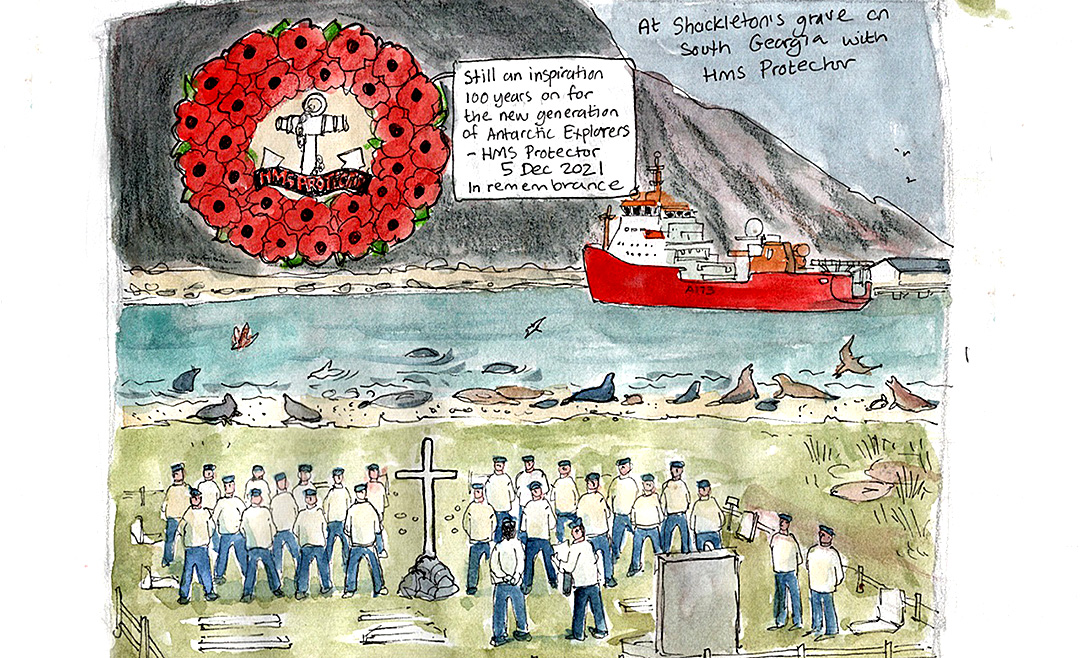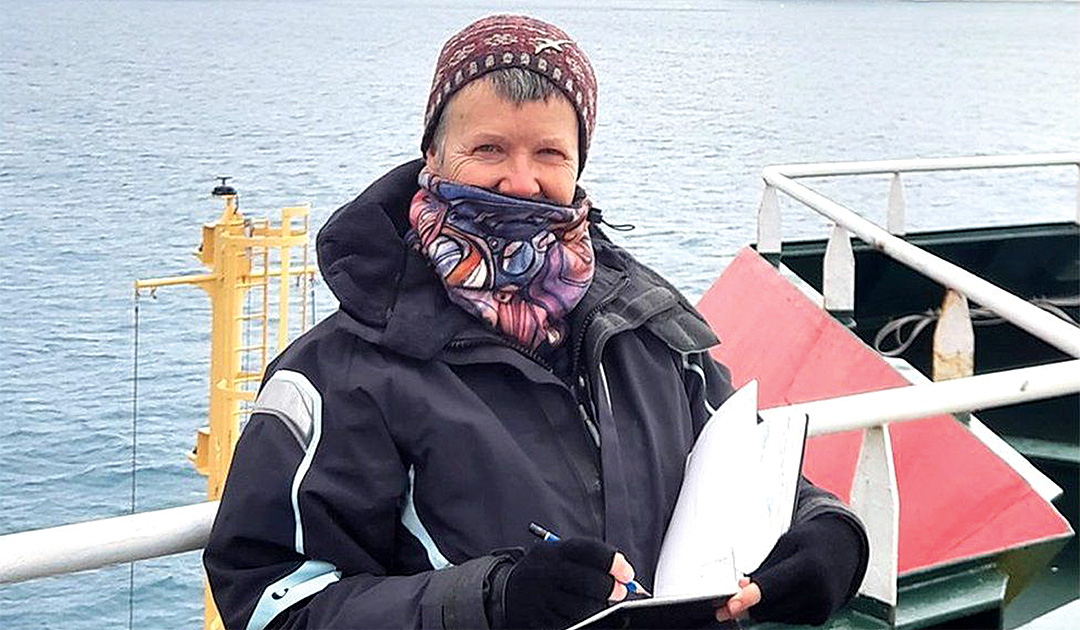
Penguins, polar landscapes and old whaling boats are among the many scenes Claudia Myatt sketched during a trip to Antarctica. During a five-week voyage on a Royal Navy ship in 2021, she visited a number of islands and captured the landscapes and wildlife in her sketches.
“There’s nothing like the thrill of drawing on location. Especially when the place is the most important wilderness in the world and my sketchbook is balanced on the bow of a Royal Navy icebreaker as it pushes aside ice floes. It was “a lifetime dream,” Claudia Myatt said upon her return.

The British marine artist and illustrator from Woodbridge had to be quarantined for eight days at an old Royal Air Force station near York before her trip, which was “a bit grim but necessary,” as she said. She then flew with the RAF from Brice Norton military base near London to the Falkland Islands to join the icebreaker “HMS Protector”, which was her painting studio for the next 5 weeks.
“I used my sketchbooks as a journal. The pages filled quickly and I tried to use lines and colors to represent not only what I saw, but also what I felt. That clarity of air made me feel intensely alive, even when a razor-sharp wind tries to snatch your sketchbook out of your hand.”

Among her images are former sealing and whaling boats in South Georgia, once home to the whaling industry. Now, the South Georgia Heritage Trust is working “to repair past damage to its environment, to protect its wildlife now and in the future, and thus to show descendants the best and worst of humanity.”
Claudia Myatt uses watercolor along with sketch pens and sometimes colored pencils to create her artwork. “I like to record the history of a place and use my sketchbooks to tell a story”.
“As a marine artist and illustrator, I have traveled the oceans on many different types of ships, from sailing vessels to cruise ships, but this was my first time on a Royal Navy ship and my first time in Antarctic waters. I was well taken care of, with a booth large enough to spread out my art materials and enjoy the rare pleasure of unstructured time,” the artist enthuses.

Charlotte Connelly, museum curator at the Scott Polar Research Institute, said the artist-in-residence program allows them to “build on our collections with contemporary work that reflects what’s happening in the territories.”
“We’re often looking for someone to do something that we don’t really have here, and Claudia has a documentary way of capturing what she sees in her sketchbooks,” she added. “We hope this will contribute greatly to our outreach program in the future.”
Heiner Kubny, PolarJournal
Website of Claudia Myatt





